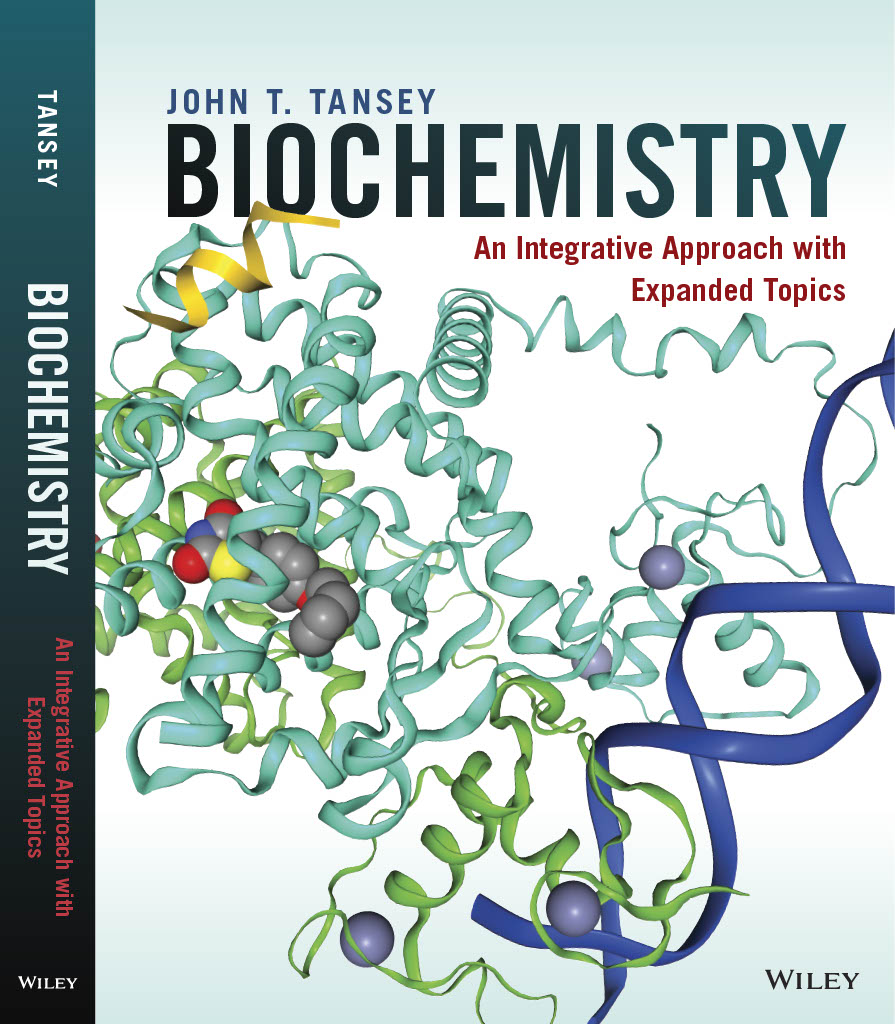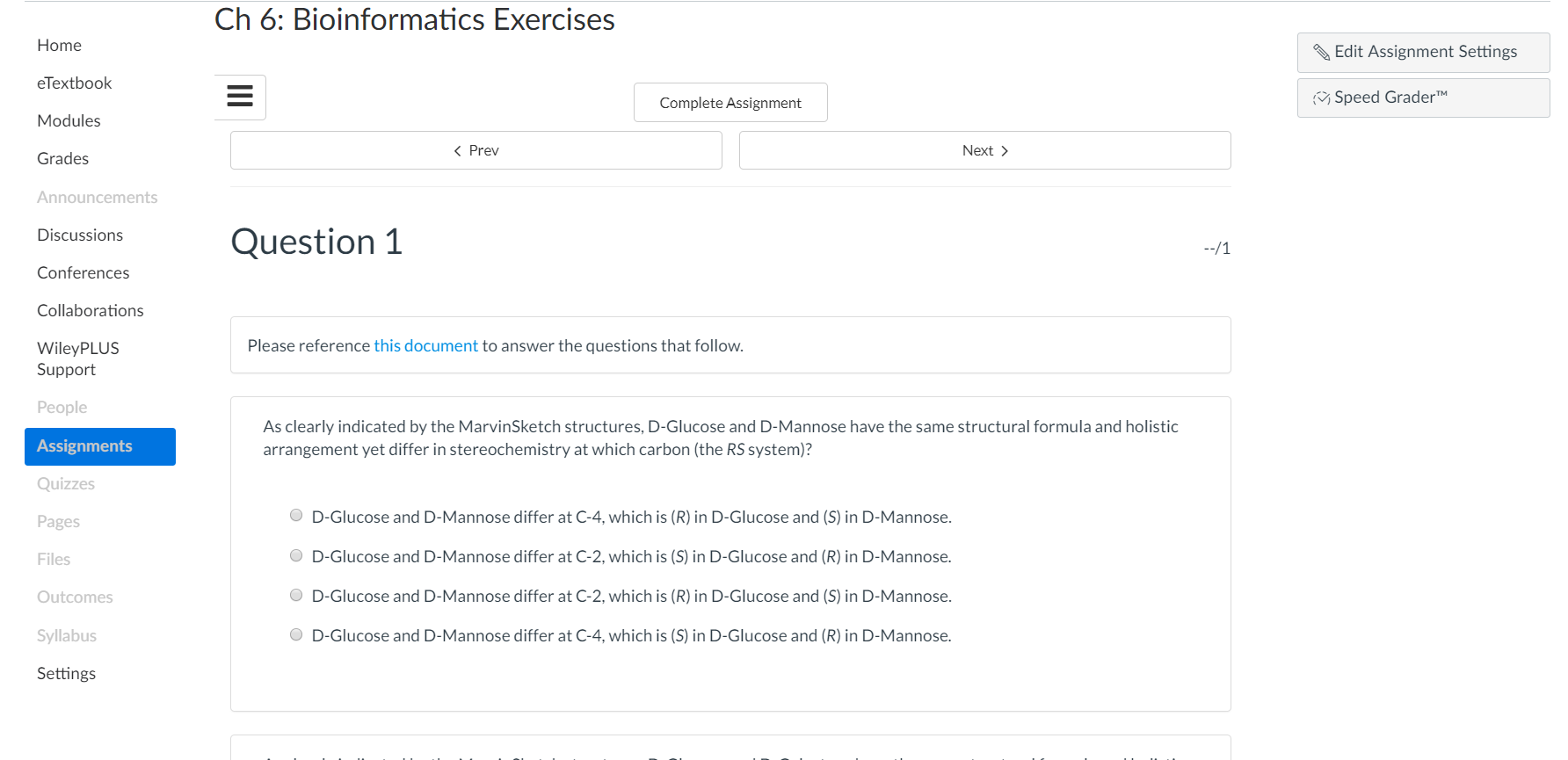
Biochemistry: An Integrative Approach with Expanded Topics
By John Tansey
Biochemistry: An Integrative Approach with Expanded Topics addresses the diverse needs of premed, biochemistry, and life science majors taking a two-semester biochemistry course by presenting relevant material while still preserving a chemical perspective. Using an integrated approach, Descriptive Biochemistry and Metabolism are taught together, presenting Biochemistry as a more integrated subject to address the diversifying needs of the student population. Key concepts are introduced, and then revisited and cross-referenced throughout the text to establish pattern recognition.
Presented within WileyPLUS, Biochemistry: An Integrative Approach with Expanded Topics emphasizes worked problems through video walkthroughs, interactive elements and expanded end-of-chapter problems with a wide range of subject matter and difficulty. The worked problems in the course are both qualitative and quantitative and model for students the biochemical reasoning they need to practice. Students will often be asked to analyze data and make critical assessments of experiments. The integrated approach, problem solving focus, and stunning visuals throughout the text and WileyPLUS, provide students with the tools needed for success in Biochemistry and their future careers.
Schedule a Demo Request Instructor AccountWant to learn more about WileyPLUS? Click Here
Dynamic Figures
Dynamic figures take key elements from the section and highlight and organize them using a variety of electronic tools that have previously been unavailable or inaccessible to students. An introduction summarizes the dynamic figures. These figures are easy to navigate using a variety of different platforms (including phones and tablets). They provide access to key concepts, metabolites and intermediates, pathways, and enzymes found in each course section.
Worked Problem Videos
The worked problems in the course are both qualitative and quantitative and model for students the biochemical reasoning they need to practice. Students are often asked to analyze data and make critical assessments of experiments.

Bioinformatics Exercises
Short, assessable, and content-specific bioinformatics exercises serve as virtual hands-on assignments that illuminate the connections between theory and applied biochemistry, thereby stimulating student interest and proficiency in the subject.

John Tansey has been teaching biochemistry for over 15 years and is currently the director of the Interdisciplinary Program in Biochemistry and Molecular Biology, Otterbein University, Westerville, Ohio. He was a post-doctoral fellow 1997-2002, National Institutes of Health, The National Institute of Diabetes and Digestive and Kidney Diseases (Dr. Dean Londos, advisor). He received his Ph.D. in 1997 in biochemistry from Wake Forest University (Drs. Moseley Waite and Tom Thuren, advisors) and his undergrad degree in 1991 from the University of Massachusetts, Amherst in biochemistry and molecular biology (Dr. Jack Nordin, advisor).
Prof. Tansey’s current research focuses on the roles a group of lipid droplet proteins (the PAT family of proteins) plays in neutral lipid metabolism, insulin resistance, type II diabetes mellitus, and atherosclerosis. This work is an extension of his postdoctoral work and is conducted almost exclusively by undergraduate researchers. In the past 6 years these students have presented at national or international conferences (ASBMB, ACS, and FASEB) over 20 times. Dr. Tansey’s work is highly regarded by the research community and has been cited over 750 times in the scientific literature.
- The chemical foundations of biochemistry
- Nucleic Acids
- Proteins I: An introduction to protein structure and function
- Proteins II, Enzymes
- Membranes and an introduction to Signal Transduction
- Carbohydrates I: mono and disaccharides, glycolysis, gluconeogenesis, and the fates of pyruvate
- The common catabolic pathway: citric acid cycle, the electron transport chain and ATP biosynthesis
- Carbohydrates II: glycogen metabolism, the pentose phosphate pathway, glycoconjugates, and extracellular matrices
- Lipids I: fatty acids, steroids, and eicosanoids; beta oxidation and fatty acid biosynthesis
- Lipids II, metabolism and Transport of Complex Lipids
- Amino Acid and Amine Metabolism
- Regulation and integration of metabolism
- Nucleotide metabolism
- DNA, Chromatin, Replication and repair
- RNA, Transcription, other RNA functions
- Protein Biosynthesis
- Gene Regulation
- Protein Structure Determination
- Allosterism, Ligand Binding, and: Regulation of Protein Activity
- Designer Proteins
- Biomolecule purification
- Omics
- Signal Transduction
- Macromolecular Processes
- Plant and Agricultural Biochemistry

